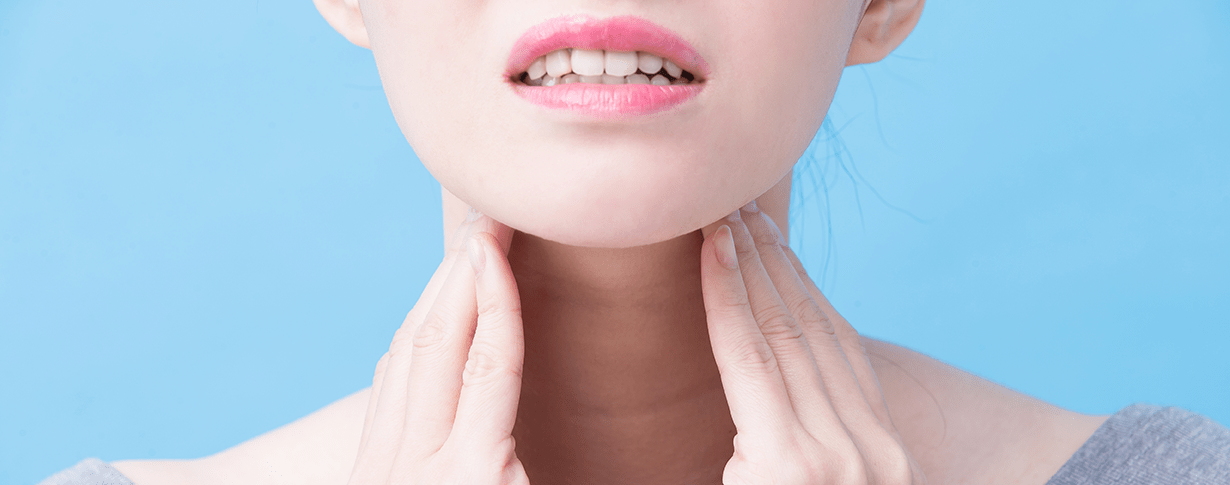Hashimoto’s Disease
It has become a thyroid disease that has been mentioned a lot especially in the last 5 years and has become the most common thyroid disease. It was first described by the Japanese surgeon Hakaru Hashimoto in 1912 in Berlin. At that time, it was defined as a disease in which the thyroid gland was hardened and its functional properties were lost.
In the following years, it was revealed that the body’s immune system developed as a result of fighting against itself. It is caused by the increase of antibodies developing against the thyroid gland in the body and trying to destroy it by seeing the thyroid gland as a harmful virus to the body. For this reason, it is defined as “Autoimmune Disease or Autoimmune Thyroiditis”. Antibodies are protein-like substances produced by the immune system to protect the body against foreign chemicals, bacteria or viruses. As a result of these, the thyroid gland is damaged and it usually gradually goes into insufficiency, and eventually the thyroid gland, which is called hypothyroidism, does not work well. In fact, only hypothyroidism is not seen in Hashimoto’s Thyroiditis. If the secretion of antibodies is high and the thyroid gland is damaged in a short time, the thyroid hormones (T4 and T3) that mix excessively with the blood from the damaged cells may cause hyperthyroidism (the condition of the thyroid gland secreting too much hormone). Or, when this attack is very slow, there will be no change in thyroid hormone levels in the blood and thyroid functions will then be considered normal.
Shows Familial Characteristics
The majority of cases with Hashimoto’s thyroiditis are women, and mothers, siblings, children, aunts and aunts of the patients should be investigated for this disease. It has been defined that it is seen 15-20 times more in women than in men. 95% of the patients are women and it is seen in 2% of the society. The incidence in women between the ages of 18-50 reaches up to 10%. For this reason, it is also defined as a mother-daughter disease in the society. It shows genetic transmission. Environmental factors also trigger the emergence of the disease.
How the Disease Occurs
In Hashimoto’s thyroiditis, autoantibodies are formed against thyroid peroxidase (TPO) and thyroglobulin (TG) found in thyroid cells. The body produces large amounts of anti-TPO antibodies and anti-TG antibodies to destroy the thyroid gland. These antibodies were identified in the 1980s, long after the disease was identified. These antibodies bind to the thyroid gland and cause damage to the thyroid cells. Following this, many inflammatory cells, especially lymphocytes, accumulate in the thyroid gland. As the thyroid cells are damaged and reduced, the gland loses its properties and volume and the number of cells to make hormones decreases, and eventually thyroid hormone deficiency occurs. The cloth actually does not always shrink initially. Meanwhile, some cells in the blood enter the thyroid gland and prevent the function of some thyroid follicle (vessels filled with thyroid hormone) cells. To compensate for this, some thyroid cells also proliferate. As a result, the thyroid gland swells and some follicles rupture. In other words, goiter becomes a similar picture. As a result of the repair of the fragmented follicles, scar tissue (fibrosis) occurs in their place. After a while, the thyroid gland becomes irregular with scar tissue in some places and cell proliferation in some places. Over time, the scar tissue increases, the volume of the gland decreases and the thyroid gland becomes smaller (thyroid atrophy).
Environmental Factors Increasing the Incidence of the Disease
Excess iodine consumption comes first. Since refined salts were iodized in Turkey in 1998-1999, there has been an increase in the frequency of this disease with excessive salt consumption. In genetically susceptible individuals, excessive iodine intake can directly inhibit thyroid hormone synthesis and trigger the immune system, causing the thyroglobin molecule to become more sensitive to anti-TG and anti-TPO antibodies. Therefore, the severity of the damage increases and the destruction of the thyroid gland accelerates. Other environmental factors are stress, pregnancy, infections, smoking, hepatitis C infection and selenium deficiency. Selenium can protect the region where autoantibodies bind and initiate damage, especially in the membrane of thyroid cells (although it has not been fully elucidated). For this reason, taking selenium at regular intervals and iodine restriction may be recommended, especially in Hashimoto patients with normal thyroid hormones. (HORMONES 2013, 12(1):12-18).
Complaints
Most of the patients do not have any obvious complaints. If there is hypothyroidism, symptoms such as weakness, fatigue, exhaustion, weight gain, inability to lose weight, cold, tiredness, dryness of the skin, slowing of bowel movements, constipation, forgetfulness and depressive mood are observed. In women with hypothyroidism, menstrual bleeding may be higher in quantity and for longer periods; menstrual periods may also occur sooner than usual. If a woman with untreated hypothyroidism becomes pregnant; she may not be able to continue her pregnancy, the disease will be cured with thyroid hormone replacement therapy.
As age progresses, the frequency of hypothyroidism (thyroid gland insufficiency) increases in patients with Hashimoto’s. These patients have a rubbery goiter. Very rarely, the thyroid gland may be stiff. There is no pain or tenderness in the thyroid gland. Often the thyroid grows silently and there are no complaints. They usually apply to the doctor with complaints such as weakness, exhaustion, pallor, swelling in the eyelids, hands and face, feet, and deepening of the voice, caused by goiter or thyroid hormone deficiency. If children have Hashimoto’s disease, they have growth retardation, delayed bone age, and high cholesterol levels.
In case of hyperthyroidism, complaints such as weight loss, diarrhea, sweating, palpitations, and lack of energy are at the forefront. If the thyroid tests are normal, the patient may not have any complaints or may experience skin changes and hair loss. Women can also have menstrual disorders. In this case, there may be difficulties in conceiving. Therefore, TSH value below 2.5 micIU/mL is targeted in young women with Hashimoto’s disease.
How is the diagnosis made?
It is determined by T3, T4 (especially free T3, free T4), TSH, anti-TPO and anti-TG tests. Thyroid ultrasound is very helpful in diagnosis. With ultrasound, different images can be seen depending on the degree of damage to the gland. The most common is the look that looks like an old fabric with patches on the cloth. The patchy appearance varies according to the frequency and distribution of scar tissue.
If Hashimoto’s thyroiditis is present, other members of the family should also have thyroid tests. Mothers, daughters, sisters, aunts and aunts of women with Hashimoto thyroiditis should be investigated for this disease. TSH test should be done first. If it is above normal, an endocrinologist should be consulted.
Other Disorders That May Be Found in Patients
1. Graves’ disease in 50 percent of cases
2. Type 1 diabetes
3. Addison’s Disease (adrenal gland, cortisol deficiency)
4. Hypogonadism as a result of testicular and ovarian inflammation
5. Parathyroid hormone deficiency, (hypoparathyroidism, low calcium and convulsions) )
6. Pituitary gland inflammation
7. Anemia due to vitamin B12 deficiency (Pernicious Anemia)
8. Vitiligo (white areas on the skin)
9. Rheumatoid Arthritis (joint inflammation)
10. Thrombocytopenia (lack of blood cells that allow blood to clot)
11. Myasthenia gravis ( muscle disease causing pain and weakness in the muscles)
While Hashimoto’s thyroiditis can be found alone, it can be found together with Basedow-Graves disease, thyroid nodule, multinodular goiter and thyroid cancers. All kinds of thyroid disease can develop on the basis of Hashimoto.
Treatment and Follow-up
It differs according to the characteristics of each patient. If there is hypothyroidism, thyroid hormones are started. If there is hyperthyroidism, anti-thyroid drugs are given. If thyroid hormones are normal, the drug may not be started. However, in young women and pregnant women, when the TSH value is roughly 2.5 micIu/mL, thyroid hormone can be started more quickly. Selenium can be used easily in non-pregnant women. Iodine intake should be restricted except for pregnant women. Follow-up should be done every 6 months to ensure ideal dose intake in those taking thyroid hormone. In hyperthyroidism, the follow-up period is shortened. If there is a thyroid nodule on the floor, follow-up with ultrasound is done at certain intervals according to the characteristics of the nodule.







